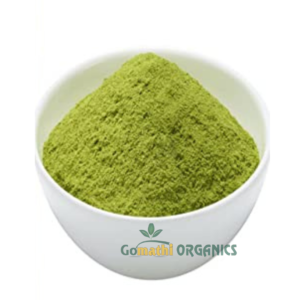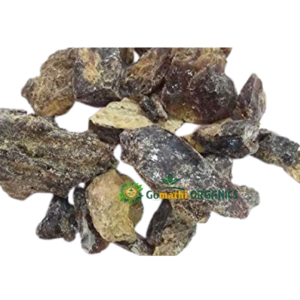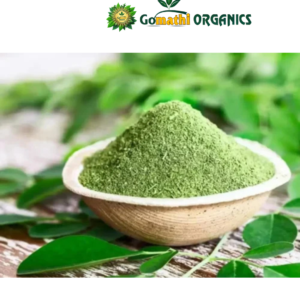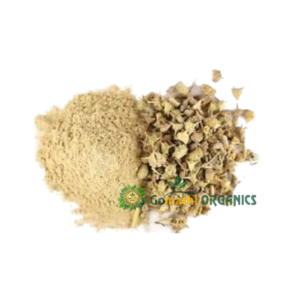🌿 What is Thiruneetru Pachilai Powder (Tridax procumbens)?
Thiruneetru Pachilai Powder is made from the leaves of the Thiruneetru Pachilai plant (Tridax procumbens), a small, ground-spreading herb revered in Siddha and Ayurvedic medicine. Known for its powerful wound-healing and anti-inflammatory properties, it has been traditionally used to treat skin disorders, bleeding wounds, respiratory ailments, and hair loss. This herb is especially respected for its regenerative ability and is often used in external applications.
🌱 Description of Thiruneetru Pachilai Plant
-
Botanical Name: Tridax procumbens
-
Family: Asteraceae
-
Plant Type: Perennial herb
-
Growth Habit: Creeping, mat-forming herb with rootable stems
-
Leaves: Ovate to lance-shaped with toothed margins
-
Flowers: Small, daisy-like with white petals and yellow disc florets
-
Roots: Fibrous roots that spread across the soil
-
Odor: Mild earthy scent
🌍 Habitat of Thiruneetru Pachilai
Thiruneetru Pachilai is native to tropical and subtropical regions, especially in India and Southeast Asia. It grows abundantly in roadsides, wastelands, open fields, and rocky plains. It thrives in well-drained, sandy to loamy soils and can tolerate dry conditions, making it a hardy, easily accessible medicinal herb.
🌟 Medicinal Properties of Thiruneetru Pachilai Powder
Thiruneetru Pachilai is widely appreciated for its healing and protective properties:
-
Wound Healing: Speeds up clotting and tissue repair for minor cuts and injuries.
-
Antimicrobial: Fights infections caused by bacteria and fungi.
-
Anti-inflammatory: Soothes swellings and skin irritation.
-
Respiratory Support: Used in traditional remedies for asthma and cold-related issues.
-
Hair Health: Promotes hair growth and strengthens hair follicles.
-
Liver Tonic: Traditionally believed to support liver detoxification.
-
Hemostatic: Stops bleeding from wounds and cuts.
🧪 Active Compounds in Thiruneetru Pachilai
Thiruneetru Pachilai contains numerous bioactive phytochemicals that lend it therapeutic value:
-
Flavonoids: Antioxidant compounds that help neutralize free radicals.
-
Alkaloids: Known for antibacterial and healing activity.
-
Carotenoids: Promote skin regeneration and support eye health.
-
Saponins: Aid in immune response and reduce inflammation.
-
Tannins: Provide astringent properties, beneficial for wound care.
🍵 Usage and Dosage
For Wound Care (Topical Use):
-
Mix 1 tsp Thiruneetru Pachilai Powder with coconut oil or aloe vera gel.
-
Apply directly to the clean wound or affected area.
-
Cover with a clean cloth if needed.
-
Use 1–2 times daily until healed.
For Hair Growth (External Application):
-
Mix Thiruneetru Pachilai Powder with amla or bhringraj powder.
-
Add warm water or curd to form a smooth paste.
-
Apply to scalp and leave for 20–30 minutes.
-
Rinse off with mild herbal shampoo.
-
Use twice weekly.
For Respiratory Relief (Infusion):
-
Boil ½ tsp powder in 1 cup of water with tulsi leaves.
-
Simmer for 5–7 minutes and strain.
-
Drink warm once daily for 3–5 days under supervision.
⚠️ Precautions
-
Allergic Sensitivity: Conduct a patch test before external use.
-
Internal Use Caution: Use only under professional guidance for internal applications.
-
Pregnancy & Lactation: Not advised during pregnancy unless recommended by a healthcare provider.
-
Medical Conditions: Consult a qualified practitioner if you have liver or kidney disorders.
📦 Storage
-
Store Thiruneetru Pachilai Powder in a dry, airtight container.
-
Avoid exposure to moisture and direct sunlight.
-
Use a dry spoon to scoop the powder.
-
Shelf life: Best used within 12 months of packaging for potency.
🌿 Organic and Ethical Considerations
-
Purity: Choose powders free from chemical pesticides or synthetic additives.
-
Ethical Harvesting: Source from farms that ensure the herb is collected sustainably and ethically.
-
Community Support: Prefer vendors who support traditional herbalists and sustainable livelihoods.
Tamil: திருநீற்று பச்சிலை பவுடர் (Thiruneetru Pachilai powder)
Hindi: राम तुलसी (Ram Tulsi)
Telugu: భూ-తులసి (Bhu-Tulasi)
English: Great Basil, Sweet Basil
Latin: Ocimum basilicum
📊 Nutritional Facts, Info & Dosage for Thiruneetru Pachilai Powder
Although primarily valued for its medicinal properties, Thiruneetru Pachilai Powder also provides a modest range of natural nutrients and beneficial phytochemicals that support healing and wellness.
🧬 Nutritional & Phytochemical Profile (Per 100g Approximate – varies by source and preparation method)
-
Energy: ~280–300 kcal
-
Protein: ~8–10 g
-
Fiber: ~20–25 g
-
Carbohydrates: ~40–45 g
-
Calcium: ~150–180 mg
-
Iron: ~5–7 mg
-
Vitamin C: ~40–50 mg
-
Beta-Carotene: Present in moderate quantities
-
Flavonoids & Tannins: Rich in antioxidant content
-
Alkaloids & Saponins: Present in trace medicinally active quantities
⚖️ Recommended Dosage
As Thiruneetru Pachilai is potent in its action, dosage should always be moderate and tailored to the intended purpose:
For External Use (Wound Healing, Hair & Skin Applications)
-
Dosage: 1 teaspoon (approx. 2–3 grams) per application
-
Frequency: 1–2 times daily depending on condition
-
Duration: Continue until symptoms subside, or as advised by a Siddha/Ayurvedic practitioner
For Internal Use (Under Professional Supervision Only)
-
Decoction: ½ tsp powder boiled in 1 cup water, taken once a day
-
Frequency: For respiratory or detoxification support — 3 to 5 days in a controlled regimen
-
Caution: Avoid prolonged internal use without supervision due to potent bioactive constituents
💡 Quick Tip: Always mix with a suitable carrier such as aloe vera, coconut oil, warm water, or herbal infusions for optimal absorption and gentleness on the body.
🍵 How To Consume, Use & Store Thiruneetru Pachilai Powder
Thiruneetru Pachilai Powder, known for its powerful cleansing and balancing properties, can be used both externally and internally—with care and guidance. Traditionally employed in Siddha medicine, it supports skin health, respiratory relief, and wound healing.
🧴 External Application Methods
-
For Skin Infections & Wound Healing:
• Mix 1 tsp Thiruneetru Pachilai Powder with neem powder and a few drops of turmeric-infused coconut oil.
• Apply as a paste on affected areas.
• Leave for 15–20 minutes and rinse with lukewarm water.
• Use 1–2 times daily until healing progresses.
-
For Hair Health (Anti-Dandruff & Scalp Care):
• Mix with hibiscus powder and yogurt or aloe vera gel.
• Apply to scalp and hair roots.
• Leave for 30 minutes before washing off with herbal shampoo.
-
For Oral Ulcers & Gum Health:
• Gargle with a warm decoction made from 1/2 tsp powder boiled in 100 ml water.
• Swish for 1 minute, then spit out. Do not swallow.
• Use once daily for 3–5 days.
🥄 Internal Use (Only Under Professional Guidance)
• Prepare a decoction by boiling 1/4 to 1/2 tsp powder in one cup of water.
• Let steep for 5–7 minutes, strain, and sip warm.
• Can be used to support mild cold, cough, and detox—but only under traditional practitioner oversight.
• Avoid long-term use or high doses.
📦 Storage Guidelines
• Store in a clean, airtight glass or steel container.
• Keep away from moisture, direct sunlight, and strong odors.
• Always use a dry spoon to avoid contamination.
• Shelf Life: Up to 12 months when stored in ideal dry and cool conditions.
🪔 Traditional Note:
Drying the powder in shade and storing in sacred containers (like copper or earthenware) is considered auspicious and preserves its pranic energy, as per traditional Siddha wisdom.
⚠️ Caution
Though Thiruneetru Pachilai (Tridax procumbens) is widely recognized for its healing and purifying nature, responsible use is essential for safety and efficacy:
-
Internal Use Requires Supervision: Always consult a qualified Siddha, Ayurveda, or naturopathy practitioner before consuming the powder, especially if pregnant, lactating, or under medical treatment.
-
Allergic Reactions: Individuals with plant-based allergies should perform a patch test before external use. Discontinue use if rash or irritation develops.
-
Not for Long-Term Internal Use: Avoid prolonged ingestion unless prescribed, as overuse may cause digestive imbalances.
-
Children and Elderly: Internal use should be avoided or closely monitored in these age groups.
💡 Tips for Effective Use
-
Combine with Complementary Herbs: Thiruneetru Pachilai works well when blended with neem, turmeric, or aloe vera for enhanced skin-healing effects.
-
Apply Fresh: For best results in external application, mix fresh paste each time before use to maintain potency.
-
Observe Moon Cycles: In traditional practice, some herbalists prefer harvesting and using Thiruneetru Pachilai in sync with the waxing moon phase for enhanced pranic energy.
🌿 Harvesting of Thiruneetru Pachilai
-
Time of Harvest: The leaves are best harvested in early morning or late afternoon when the plant’s moisture and nutrient content is balanced.
-
Season: Typically harvested during dry, non-rainy months to prevent fungal contamination.
-
Method: Gently pluck mature, healthy leaves from well-established plants growing in clean, chemical-free environments.
-
Drying Process: Spread the leaves thinly in a shaded, well-ventilated space. Do not dry under direct sunlight to preserve its medicinal oils and nutrients.
-
Powder Preparation: Once completely dried, the leaves are finely ground into powder using a stone grinder or stainless-steel blender and stored in airtight containers.
🛡️ Ethical Note:
Always source or cultivate Thiruneetru Pachilai organically and responsibly—avoid uprooting the whole plant, as it regenerates quickly through stems and roots, supporting biodiversity.


 SCIENTIFICALLY TESTED & COMPLETELY SAFE. SUITABLE FOR VEGETARIANS. NOT TESTED ON ANIMALS/NO ANIMAL INGREDIENTS. NO KNOWN SIDE EFFECTS. COMPLETELY SAFE. NON-TOXIC. FREE FROM HEAVY METALS
SCIENTIFICALLY TESTED & COMPLETELY SAFE. SUITABLE FOR VEGETARIANS. NOT TESTED ON ANIMALS/NO ANIMAL INGREDIENTS. NO KNOWN SIDE EFFECTS. COMPLETELY SAFE. NON-TOXIC. FREE FROM HEAVY METALS 

 The Food and Drug Administration has not evaluated these Statements. This product is classified as an “Herbal Food Supplement” and is not designed to diagnose, treat, cure, or prevent any disease. If you have any underlying health conditions, please consult a healthcare professional before using this product
The Food and Drug Administration has not evaluated these Statements. This product is classified as an “Herbal Food Supplement” and is not designed to diagnose, treat, cure, or prevent any disease. If you have any underlying health conditions, please consult a healthcare professional before using this product 






Reviews
There are no reviews yet.